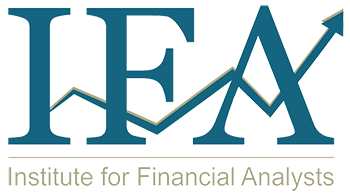How to Become a Certified Financial Risk Manager (FRM®)
Posted by: Kaplan Schweser
Updated: August 1, 2018
If you want to further your credentials as a risk manager, move forward in your professional development, and have certain qualities you might be thinking about becoming a certified Financial Risk Manager (FRM®). Offered by the Global Association of Risk Professionals (GARP), the FRM designation lets employers know that you take risk management seriously, and your knowledge has been validated by international professional standards. In addition, you have to pass the FRM exam, which also demonstrates your expertise.
So, how do you become a certified FRM? Here’s a rundown of the steps.
Step 1: Register to Take the FRM® Exam Part I
Anyone can register to take the exam by visiting www.garp.org; there are no education prerequisites. There are two parts to the exam. Both Part I and Part II are offered in May and November. The cost of registering for the exam is structured into three registration periods: early, standard, and late. It’s possible to take both parts of the exam on the same day, but if you decide to try it, note that your Part II answers will be graded only if you passed Part I.
Step 2: Pass FRM® Exam Part I
Part I of the FRM exam has 100 equally weighted multiple-choice questions. The topics are foundations of risk management, quantitative analysis, financial markets and products, and valuation and risk models.
Passing Part I of the exam takes dedication and commitment. Of those who took Part I between 2010–2017, the average pass rate was 46%. So, plan to spend at least 200 to 240 hours studying. GARP reports that the average time of study is 275 hours, and that some candidates study up to 400 hours.
You’ll receive your exam results by email about six weeks after you take the exam.
Step 3: Register for Part II
GARP gives you up to four years to register after you receive your notification that you’ve passed Part I. Check www.garp.org for the costs and schedules and register within the time window indicated.
Step 4: Pass FRM® Exam Part II
Part II consists of 80 equally weighted questions. The topics are market risk measurement and management, operational and integrated risk management, credit risk measurement and management, risk management and investment management, and current issues in financial markets.
Of those who took Part II between 2010–2017, the average pass rate was 57%. Passing Part II takes the same amount of dedication and commitment as Part I, so put in your 240 or more hours of study. This will better the odds that you’ll get good news when results are posted about six weeks later.
Step 5: Get Two Years of Experience
The final step in becoming a certified FRM is demonstrating that you’ve had at least two years of full-time work experience in the field of risk. Finance-related vocations are the only ones considered as acceptable work experience. Examples include portfolio management, industry research, trading, and risk consulting.
To demonstrate this experience, you describe your professional role in financial risk management in at least five sentences and submit it to GARP within five years of passing Part II of the FRM exam. After you submit your description, GARP will confirm that you are a certified FRM holder and have been included in its registry.
